|
Recall a time when you experienced a loss of trust in a relationship. Perhaps it was caused by you or someone else. What happened? Was the issue discussed and were you able to rebuild trust in that relationship?
It can be challenging for sure. In fact, many of us don’t even know where to start. Having a strong foundation of trust is one of the most important elements in our relationships, and that includes our relationships at work. And yet it can feel challenging to address. When working to strengthen or rebuild trust, it is helpful to take a behavioral perspective. In Dare to Lead™ we use an acronym to support trust-building. It’s called BRAVING and stands for Boundaries, Reliability, Accountability, Vault, Integrity, Non-judgment & Generosity, areas that are critical to trust building. When we examine trust from a behavioral perspective we can identify areas in which we are actively building trust and other areas which might need some work and attention. Then we can focus on or speak to specific behaviors and stay away from conversations about character. Developing trust doesn’t happen all at once. It takes time and is often built through small actions over time. Perhaps you have heard of Brené Brown’s analogy of marbles in a marble jar. The idea is that every time we do something that builds trust in a relationship, another marble goes into the jar. Eventually, with the people who are our trusted friends, we end up with a jar full of marbles. And yes, sometimes something happens that tips that jar over and marbles spill out. Trust has been damaged. In order to refill that jar, we need to rebuild trust. We can do this by having direct, clear, and kind conversations about the specific behavior that led to this breach of trust and create a plan about what can be done to repair. What are the actions you are taking, big and small, that build trust in your relationships and teams? Are there areas from BRAVING at which you excel? And which areas could use some focused attention to strengthen even more?
0 Comments
Ah, summertime! Many are enjoying vacations, traveling, or having adventures outside. It’s traditionally a season to switch gears a bit and even take time off to recharge.
Earlier this year Brené Brown announced that she would be taking 3 months off over the summer. I believe she called it a sabbatical. When I heard that news, my first reaction was, “That is so great! I am so happy to hear that she is doing that. She deserves it.” I knew that Brené had just finished writing Atlas of the Heart, and she filmed an HBO series based on the book. She's been busy, she works hard, and she deserves some time to rest and recharge. And then I thought, “Well, what about me? What do I deserve?” I’m a doer. I like to be busy and I genuinely enjoy my work. I like to feel that I have been productive with my day - that my efforts made a difference. When I’m not at my best, I can sometimes evaluate my sense of self-worth by how productive I have been. “How valuable am I? Well, what did I get done today? Not a lot? Well, I better work harder so that I’m worthy.” Maybe you can relate. When I am at my best, I genuinely know my value and I don’t feel like I have to hustle for my worth. I also know that when I take some time off, I return to my work refreshed, renewed, and even more present and grounded. And I know that taking time off from work is truly beneficial to one’s well-being. Taking even just one day off can help reduce stress, clear the mind, and increase productivity. And get this - studies have shown that taking vacations can improve heart health! Now that's a great reason to take a break! So even though I know this, why might it feel so hard to unplug & relax? As I continue to work on this in myself, I am focusing on building in more time to play and recharge. More hikes. More yoga. Less doing. More being. I had a client who recently decided to do the same and he felt the impact of this almost immediately. Not only did his energy increase, but he was happier and more productive when he was working. Others noticed as well and commented on his new attitude and sense of calm. How do you approach having “down time” or taking time off? Whether it’s a 3-month sabbatical or a Saturday just for you? I’d love to hear your tips and experiences as I expand more into this arena. Until next time, be brave, relax a little, and take good care. A few weeks ago I facilitated a hybrid session with a team. It wasn’t supposed to be that way.
The plan was that we would all be together. But due to a possible COVID exposure on my part and an abundance of caution, I stayed home and was beamed in virtually (via Zoom). This was the first time with this arrangement for me. (It seems we are experiencing many firsts these days!) And as I look back on it, I think the ease with which we shifted our plan had everything to do with the flexibility we have had to embrace over the past two years. And like the many other “firsts” I learned some things! I learned it’s possible to have an effective and productive hybrid meeting. I also learned that I need to give some guidelines about optimal meeting conditions to minimize possible distractions or disruptions. But that’s for another time. (Watch my video from last week to hear about some of the humorous disruptors to our meeting.) I had a similar learning experience when shifting to an all-virtual offering. I have been working with groups and teams doing leadership development for my entire career. And, with the exception of individual coaching, this work has always been in-person. Pre-pandemic I didn’t think much about virtual work. I grew up with a model of in-person facilitation and had always followed this model. Could virtual sessions offer anything valuable? Would they be effective, engaging, and productive? After 2 years I can enthusiastically say, YES! They can and they are. I had to learn some things along the way, and after some trial and error, learning from others and taking courses, it all clicked. It seems we are now in a similar place with the hybrid work environment. With increasing flexibility at work, participating in meetings that have people joining both virtually and in-person will become the norm. We are on this journey together. So as we explore this new learning curve, let's continue to be generous with one another, share our learning and best practices, and make space for the fact that we are figuring this out together. I used to be uncomfortable talking about shame. And to be honest, sometimes I still am.
It’s not uncommon to feel isolated and alone in my experience. The nature of shame is that we don’t want to talk about it. Shame tells us, “You are bad. You are not worthy of love and connection.” I mean... Who wants to talk about that? And yet, what I found is once shame is normalized and discussed, we realize that as we say in Dare to Lead™: 1. We all have it. 2. We're all afraid to talk about it. 3. The less we talk about it, the more control it has over our lives. Sometimes for me, shame comes with a capital “S” and that can send me into a spiral for days. Other times it’s much more subtle and something that leaves me hustling for my worth. Here’s an example. I recently made a scheduling error and was late for a meeting with a client... I instantly felt a flood of shame rush over me. I had a little bit of panic and the story that started quickly going through my head was, “They are going to think I am such a flake. That is not who I am. I am reliable. I am on time. I’m usually early to meetings.” When I reached out to my client to explain and apologize, she was incredibly gracious. I appreciated her generosity and recognition of a minor scheduling error. We all make mistakes; we are all human. And still, this particular incident triggered something in me. It was that unwanted identity - I do not want to be seen as a flake or irresponsible person. Thankfully because of the work I do, I could recognize what was going on for me and I was able to talk about it, and move through it. Without that realization, it could have easily taken me off track for days. It probably would have triggered my perfectionism. I can imagine a world in which future meetings with this client would stress me out in preparation. I would set alarms, leave post-it notes reminders and would be hyper-aware that I did not want to be even a second late to the meeting. I could put a lot of pressure on myself to try to prove to them (and to me) that I am reliable. But instead, since we were able to talk about it, I could let it go. Shame is something that we all experience, even at work. If we see it out in the open, we see people openly shaming one another, that is a crisis situation that needs to be addressed immediately. And often it’s more subtle. Shame has many forms and can be tricky to pin down and name. It can show up as favoritism, bullying, or comparison, to name a few. When we experience those at work, we can recognize it as shame and address it. What has been your experience with shame? How might you start to recognize and name it in your workplace so that you can address it and move through it? I recently returned to hot yoga. I used to practice a lot. But habits change, pandemics happen and I stopped going.
I was hiking with a friend a couple of months ago and she was telling me that she had rekindled her hot yoga practice and was loving it. Her body craved it and she felt great. I felt inspired and decided it was time for me to return to class. My body, too, was craving more flexibility, and a little heat would help me to get there. This particular series that I know offers the same sequence of postures in every class. Because of that, I had a baseline of what I knew my body was capable of. On my first class back I found that I was still quite flexible in some ways. And not so much in others. The backbends were particularly hard and I found myself feeling discouraged by how much tighter I had become. And the heat! Wow, they are not messing around with that. Some days my face would be red for hours after class. It was hot, and uncomfortable. And I kept going back. After just a few classes I could see that my flexibility was returning. Each class I found more and more ease in my postures. And then one day, BAM! It felt like I was back to square one. Where had my flexibility gone? Why on this day was I suddenly feeling so stuck and brittle again? And at that moment, it occurred to me that practicing hot yoga is a lot like having hard conversations. Both hot yoga and hard conversations can feel difficult, uncomfortable, and awkward. In both, I want to be more graceful than I seem. And the more I practice, the more flexible I become. And some days, BAM! I feel like I’m starting over again! So, why do it then? Why not avoid it, or do something more comfortable? Because I know it's what’s needed. And it’s the right thing. With yoga, I embrace the discomfort because my back, my knees, my muscles are better for it when the class is over. Isn't it the same with hard conversations? The reason to have them is that there is an issue at hand that needs to be discussed, resolved, understood, confronted. There is a purpose for the conversation that guides us through the discomfort. And if we avoid it (the yoga or the conversation) then we have to endure something even worse - the potential inflexibility, pain, and struggle that comes from the toxic buildup in our bodies and relationships. Many of the clients that I work with tell me that their workplace has a “nice and polite” culture. Because of this they avoid having hard conversations with one another because they want to be nice and not hurt each other's feelings. I can understand the desire to be nice, and more damage can be done when we avoid the hard conversations. Resentment builds, gossip flourishes and problems persevere. We can still be kind to one another as we navigate the hard conversations. We can be clear and kind at the same time. And like hot yoga, it may not feel easy, but we can become more practiced, and flexible, and willing. What is something you've done that feels uncomfortable and necessary? Where you are willing to, as we say in Dare to Lead, “embrace the suck” because you know what’s possible on the other side? I recently discussed the 360-feedback process that I was engaging in with a number of my clients.
Many teams & individuals use 360 feedback to support their continued growth and development. These assessments provide valuable information from a range of people. However, the information gathered represents only a snapshot in time and seeking feedback on a more regular basis is essential. Even though feedback is crucial, we sometimes feel reluctant to give it, and even more so to receive it from others. It feels vulnerable to open ourselves up to the thoughts and perceptions of others. We may be surprised or even stung by what we hear. And yet, if we avoid these conversations, we are likely missing out on valuable information that could serve us in our work and lives. Sheila Heen says that one of the challenges with feedback is that it sits at a crossroads of two human needs; the need to grow, learn and develop; and the need to be loved, valued, and appreciated just as we are. It may feel challenging to honor both of those needs at the same time. How do we let people know that they are valued just as they are, while also offering them information or insights that may support their growth? Some people suggest sharing a balance of positive and constructive feedback, while others say we should have a ratio of 5:1 with appreciation to constructive feedback. I don’t know that there is a right formula, and I do know that most of us can afford to give and receive more appreciation and recognition to others. Building that “positive bank account” tends to make the more challenging conversations go more smoothly and constructive feedback easier to hear. What has worked for you? Do you seek feedback from others? And if so, what value have you received from this process? How do you approach the balance of positive to constructive feedback? What do you like to do for fun?
I love to hike. I really love hiking with a good friend and spending that time catching up. I love to read, listen to some great music, or even a great audiobook. I also love the opportunity to learn something new and take the time to figure something out on my own. We all like different things and the definition of fun may vary for each of us. And most people enjoy and benefit from setting time aside in our busy schedules to have a good time. But, what do you do for fun at work? Yes, I said, "at work". When you think of the list of priorities in your workplace, having fun may be low on that list or even missing altogether. And yet, it plays an important role in teams and organizations. Having fun at work boosts morale, reduces stress, and increases creativity. It also helps create connections, build trust and strengthen relationships, all of which support the development of a high-performing team. So, what have you done for fun at work? I’ve heard many examples from clients over the years - from team building activities, happy hour with the team after work, painting classes, and more. People seem to enjoy spending time together and getting to know each other in a non-work-related setting. They form stronger connections and build trust which positively impacts their work together. How might this be useful to you and your team? Many clients tell me that in the past, making connections with co-workers felt easier. There were opportunities to have informal conversations by grabbing lunch or a coffee with a colleague, running into someone in the elevator, or chatting at the famous "water cooler". Those informal opportunities to connect vanished for those who abruptly shifted to working remotely. Since the start of the pandemic, people have had to become really intentional about creating connections and strengthening relationships within their teams. How do you look at having fun together and creating that personal connection? And what are some of the ways that you have found that have worked for your group? I look forward to hearing your ideas. I was born and raised in Honolulu, Hawaii. It was an awesome place to grow up. As the youngest of three with two older brothers, by all accounts, I had a good childhood.
But somewhere along the road, I got the message that being “appropriate” was more important than being me. My parents, especially my dad, indicated that I should be careful about how I was presenting myself. I needed to be aware of what others thought of me and should do my best to fit in. There was a specific interaction with my dad that I'll never forget that really brought this home for me. It was a small moment and I took away a powerful message. I was chewing gum, and my father said to me, “Don’t chew gum, it makes you look cheap.” He said it with a smile, and playfully - and yet - I think he meant it. Apparently, there was an expectation of what I should do and how I should look and gum-chewing did not fit into that picture! Who knew? I became a student of how to be appropriate. I became masterful at tuning in to what was happening around me, noticing how others were responding to my presence and behavior, and then molding myself into who I thought they wanted me to be. In almost any setting I could quickly figure out how to be appropriate. Looking back on the gum-chewing incident, I believe my father meant well. He wanted the best for me, and as the only girl, surely I should be aware of how I was being perceived as others. I mean, that was my job, right? To look good for the family…. And there were ways in which my dad was old school. For example, when I was choosing which college to attend, he told me that surely I should enroll at Stanford because I would likely be meeting my husband there. But that’s another story. My point is, that he likely didn’t realize the impact of his message - that this focus on nudging me to fly below the radar, to be a good girl, and to pay attention to what others thought of me would not serve me in the long run. Don’t stand out. Don’t upset people. And for goodness sake, don’t look cheap!! Now there was a payoff to this. I was a good student, didn’t get in much trouble growing up, and I can really read a room! But there was also a cost. The cost was my authenticity, joy and full self-expression. I tempered the real me. I held her back and closed her down in places where she was too much, too big, or not appropriate. So, I had to relearn how to be who I really am. I had to figure out what it is that I want in my life and how I want to be. That is likely why I am so passionate about helping others do the same and to find more aliveness, voice, and authenticity. And it’s true, it can feel vulnerable to be yourself. Sometimes it feels easier to fit in. Being myself feels risky because if I'm being me in all my inappropriate and appropriate ways and I get rejected, that hurts. And yet, the price to pay to be appropriate for me was greater and was no longer serving me. What are the places where you feel like you have molded yourself to meet someone else's expectations? What are the beliefs that are no longer serving you? As you explore these places, I invite you to be brave in your exploration and to be kind with yourself. Do you love to check things off your list?
I do. Sometimes I'll even write things on my list that I've already completed just so I can check them off! It feels good to get things done. We are making progress towards our goals, cleaning up messes, following through on commitments to ourselves and others. And yet, at work, if we move into action too quickly and don’t take the time to get in alignment with our team, we run the risk of spending our energy on solving the wrong problem or moving in the wrong direction. Recently a client was describing a troubling trend in his organization. His leadership team would discuss a problem, decide on a course of action, and then get into action. After a few weeks on this path, the decision would come up for discussion again and a new decision would be made, one that required new & different actions. And this was not an isolated event, but a pattern. This client was discouraged, feeling like he and his team had wasted weeks going down the wrong path. Again, and again. Sometimes this has to happen as new information emerges, or we realize we need to change course. However, when it becomes a pattern, there may be a different issue at play. For this team, though they were having conversations, they were not spending enough time to really identify the problem they were trying to solve, which meant that they were constantly wasting time solving the wrong problem. Sometimes when we are pressured for time, the tension builds as we talk about an issue until someone insists that a decision be made so we can move into action. And yes, action is vital. But how do we balance problem identification with action? Einstein famously said, "If I had an hour to solve a problem, I would spend 55 minutes identifying the problem and 5 minutes solving it." We sometimes avoid that problem identification time because we think we don’t have time for the conversations. We just want to move; we just want to get into action. Conversations can feel messy. Sometimes they may lead to disagreements or conflicts. So to avoid this discomfort, we avoid the conversation altogether. And yet, it’s costly to waste time solving the wrong problem. Conversations indeed take time, but everything else takes longer... Where do you tend to just jump into action? The next time you feel yourself wanting to rush the conversation, make a decision and move into action, consider if it might serve you to spend a little more exploring the issue and gaining alignment. Until next time, wishing you and your loved ones a Happy Holiday. Be brave, be kind, and take good care. Several of my clients have been engaging in the 360 feedback process recently. And I’ve been reflecting on the value of feedback and about understanding how our style is being experienced by others.
In Marshall Goldsmith’s book What Got You Here Won't Get You There, Goldsmith discusses how the skills that got us to a certain level in an organization may be different from the skills we need to get us to the next level. But how do we really know which habits and behaviors are making us truly effective leaders and which are getting in our way? Seeking feedback is a good start. The 360 Feedback process gives us a 360 degree view of our leadership style. An individual participating in the process takes a self-survey and then selects evaluators (boss, peers, direct reports and others) to respond to the same questions. When the individual receives the feedback report, they get a picture of where they are aligned with how others see them, and where there are gaps. Gaps can show up for different reasons. One reason may be that the behaviors that took us to one level in our career may not serve us as we move to higher levels of leadership. For example, somebody who is very driven may excel in their organization because of that drive. But when they become a leader and people manager in a more senior position, that hard-pressing drive might actually burn people out. It might feel overwhelming and unsustainable to others. Or, it might serve someone very well in their career to be agreeable, adaptable, and easy to work with, but as they rise to a senior leadership role, this same behavior could be perceived as being too passive. The 360 process shines a light on these gaps and belief systems, allowing the leader to gain an understanding of how they are seen by others. Informed with this data, he or she can grow and develop by building on strengths and adapting in problematic areas. What do you know about how other people perceive you as a leader? Would it be helpful to get some feedback to see where there may be gaps in the intention of your behaviors and the impact they have on others? Sometimes the 360 process can be scary for people because they are afraid of what they might hear or they are worried it will be hurtful. And to that, I say that whether you are hearing the feedback or not, people are thinking it … So better to have the information and face it head on rather than be blindsided in the future. If you would like to know more about this process and how it might benefit you in your role, let’s chat. As Ken Blanchard is quoted as saying, “Feedback is the breakfast of champions.” |
AuthorKatie is a Certified Dare to Lead™ Facilitator and Executive Coach. Archives
September 2022
Categories
All
|
|
|
Get in touch
415-990-7970 | info@katiefredricksen.com
|
Virtual Dare to Lead | Organizational Transformation | Professional Development | Executive Coaching
About Katie | Dare to Lead | Resources | Contact
About Katie | Dare to Lead | Resources | Contact
|
© 2020 KatieFredricksen.com
Photos By: In Her Image Photography |

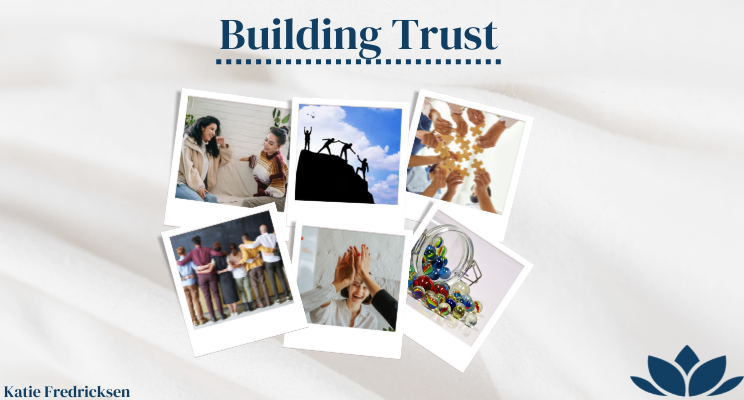



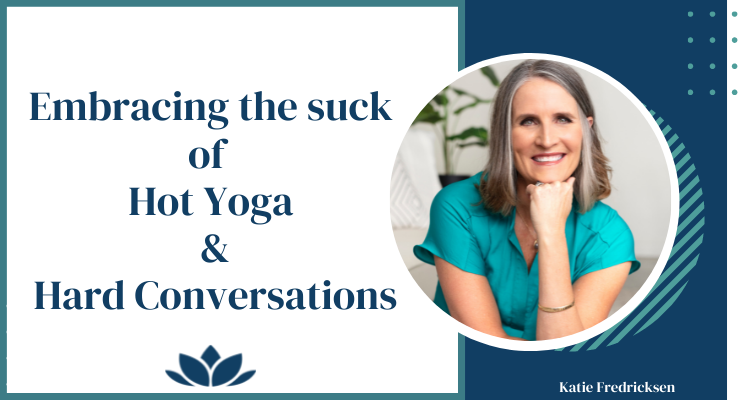
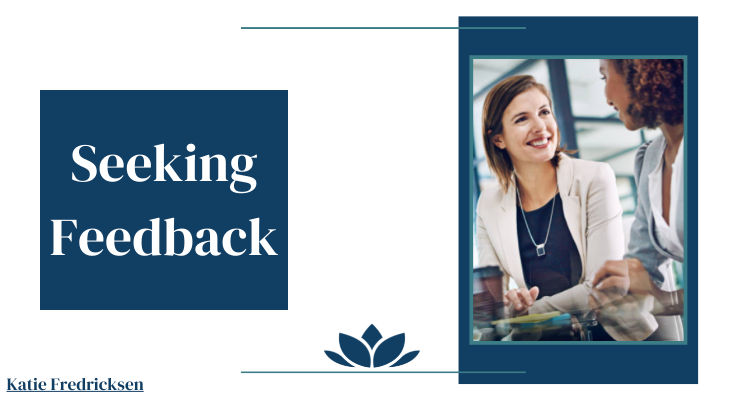
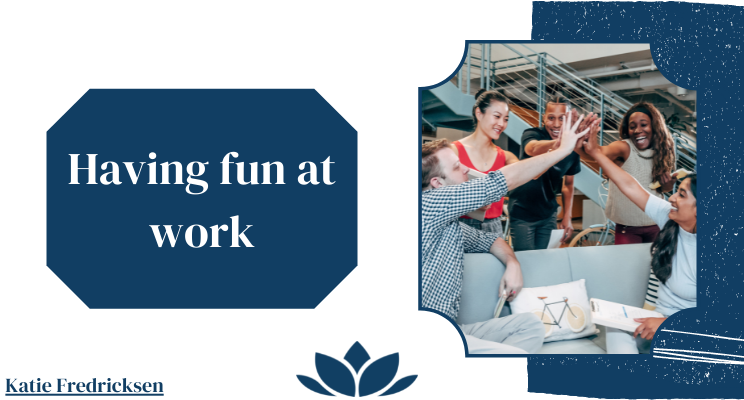
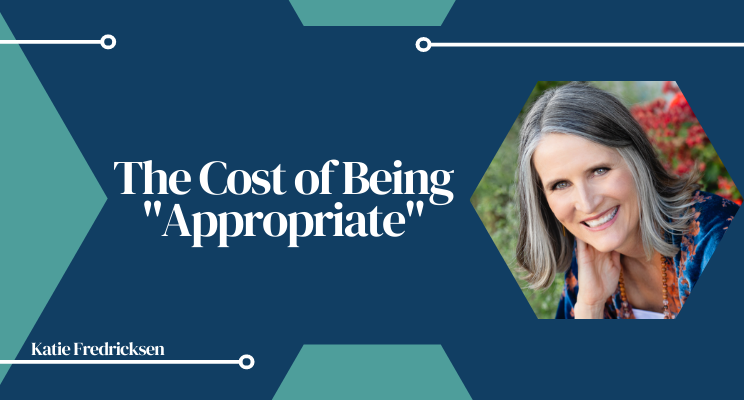
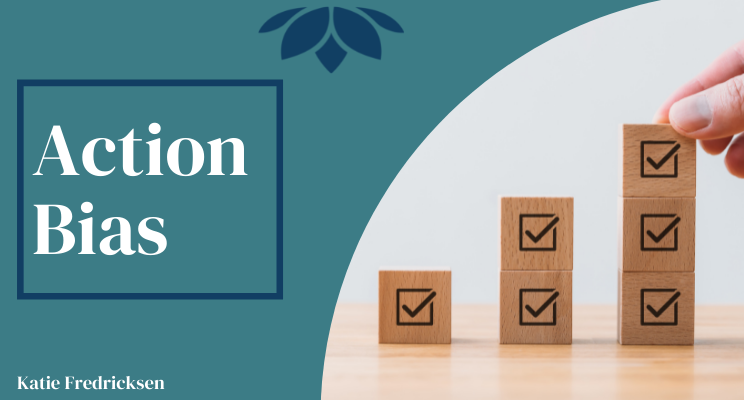

 RSS Feed
RSS Feed
